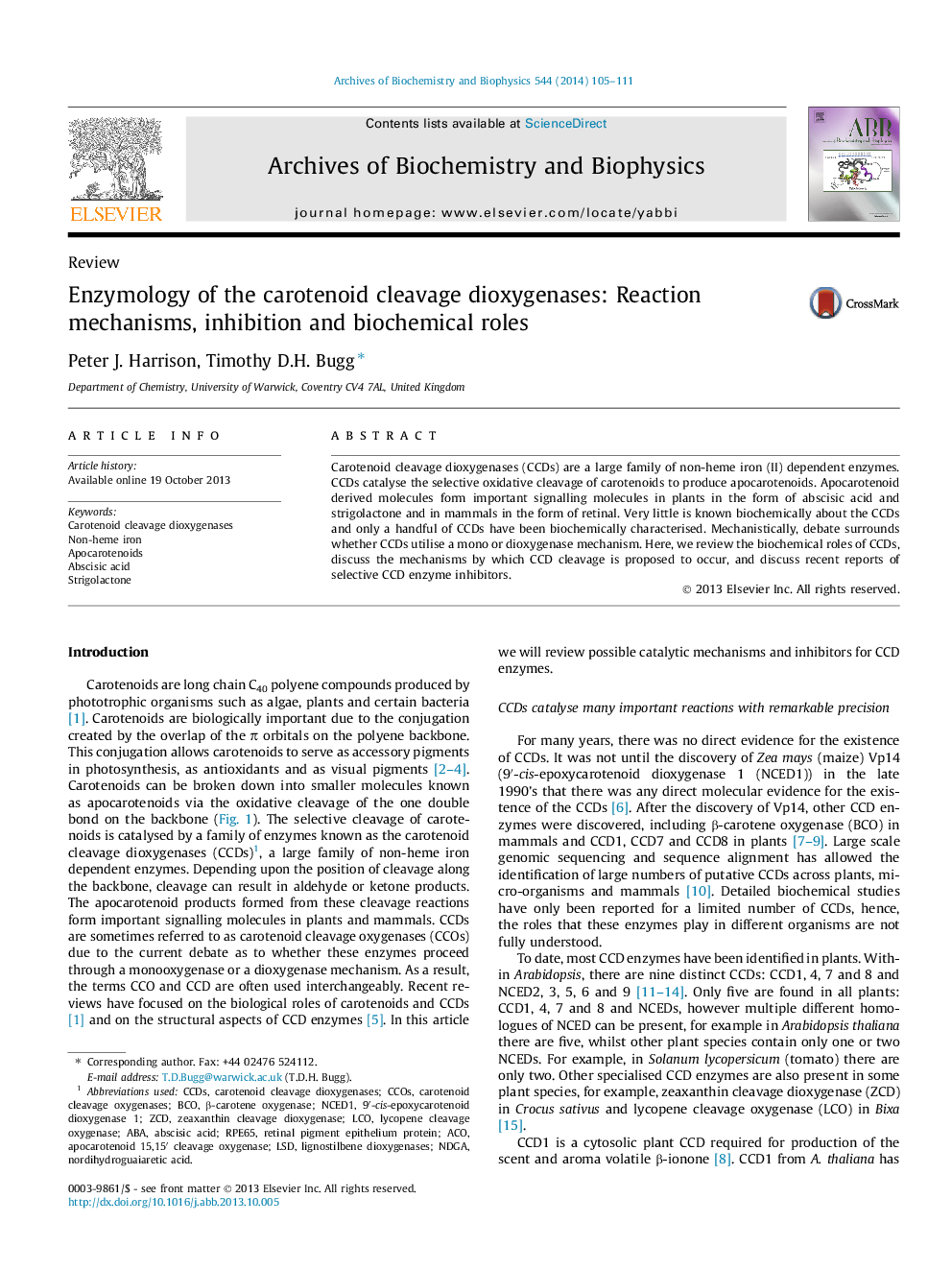| Article ID | Journal | Published Year | Pages | File Type |
|---|---|---|---|---|
| 1925237 | Archives of Biochemistry and Biophysics | 2014 | 7 Pages |
•The review focuses on the protein biochemistry of the CCD enzyme family, including possible catalytic mechanisms.•A possible mechanism for carotenoid isomerisation by CCD enzymes is put forward.•The structures and phenotypic effects of recently developed chemical inhibitors for CCD enzymes are reviewed.
Carotenoid cleavage dioxygenases (CCDs) are a large family of non-heme iron (II) dependent enzymes. CCDs catalyse the selective oxidative cleavage of carotenoids to produce apocarotenoids. Apocarotenoid derived molecules form important signalling molecules in plants in the form of abscisic acid and strigolactone and in mammals in the form of retinal. Very little is known biochemically about the CCDs and only a handful of CCDs have been biochemically characterised. Mechanistically, debate surrounds whether CCDs utilise a mono or dioxygenase mechanism. Here, we review the biochemical roles of CCDs, discuss the mechanisms by which CCD cleavage is proposed to occur, and discuss recent reports of selective CCD enzyme inhibitors.
Graphical abstractFigure optionsDownload full-size imageDownload high-quality image (60 K)Download as PowerPoint slide
